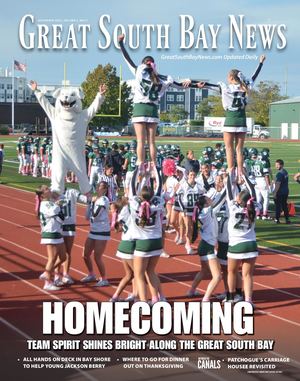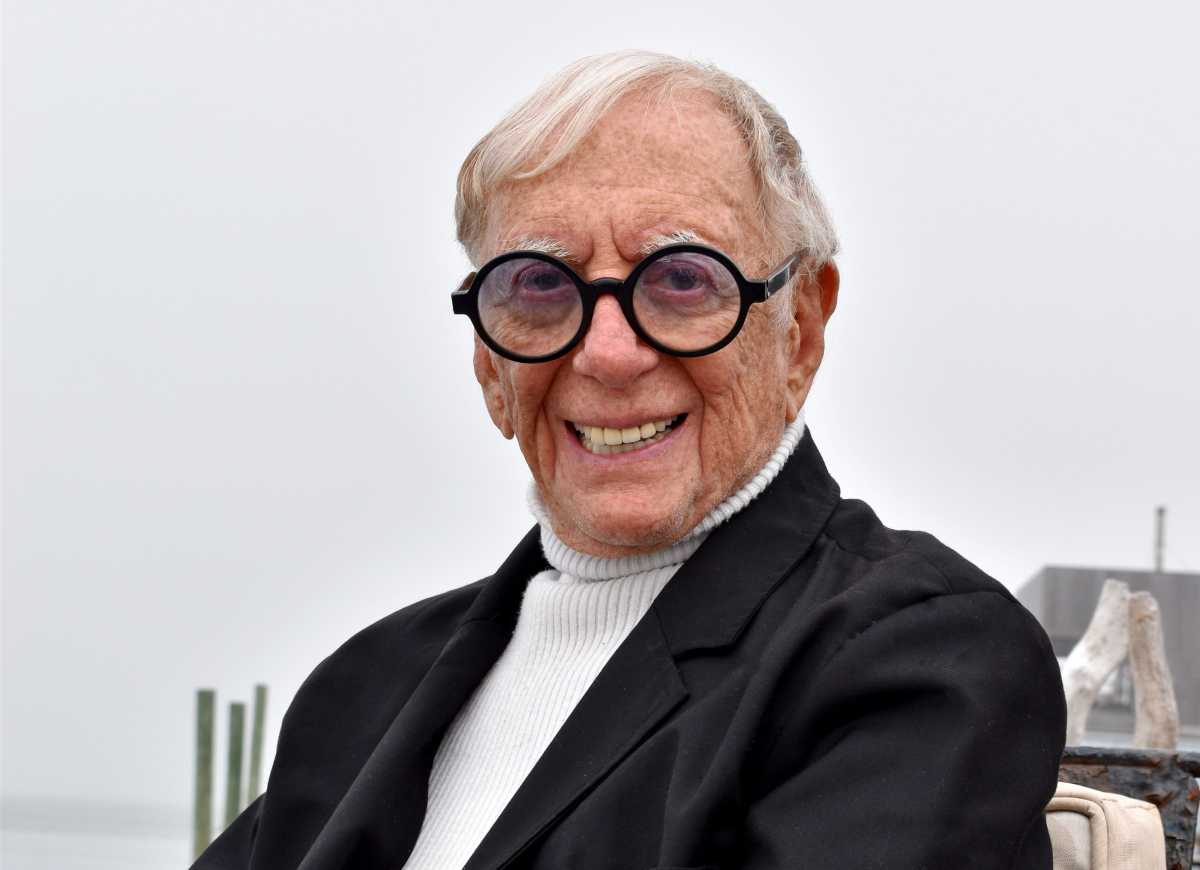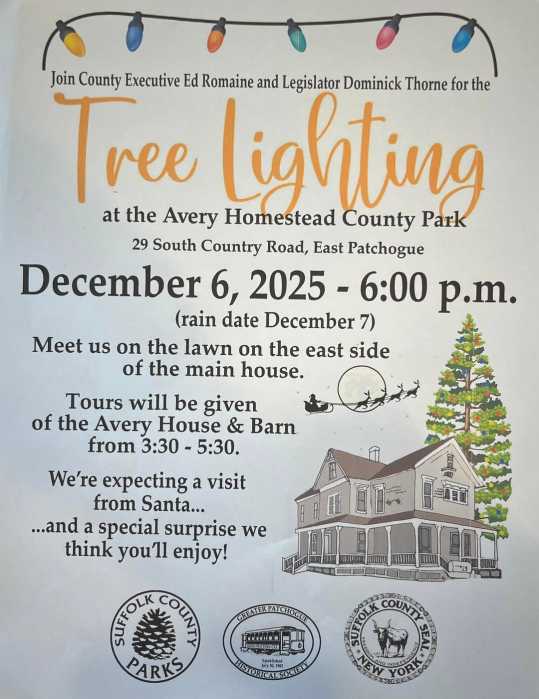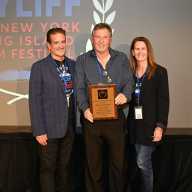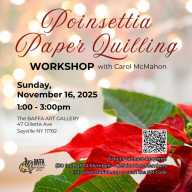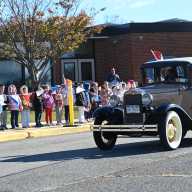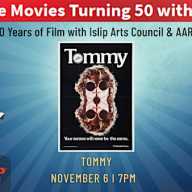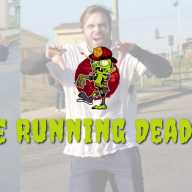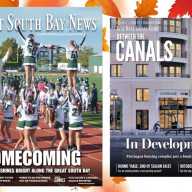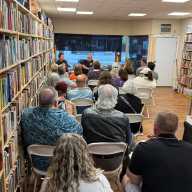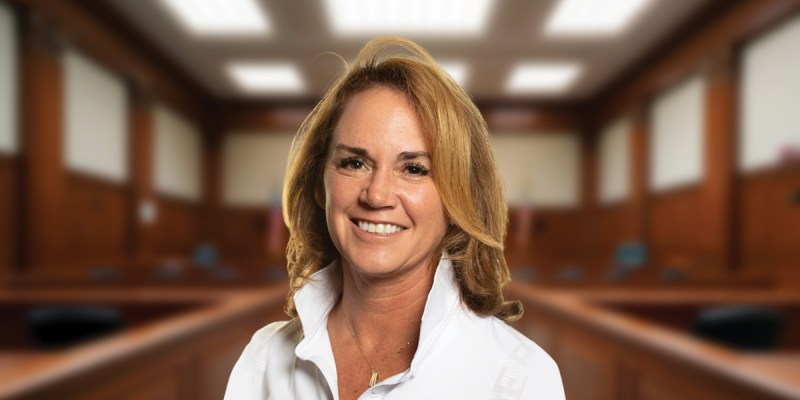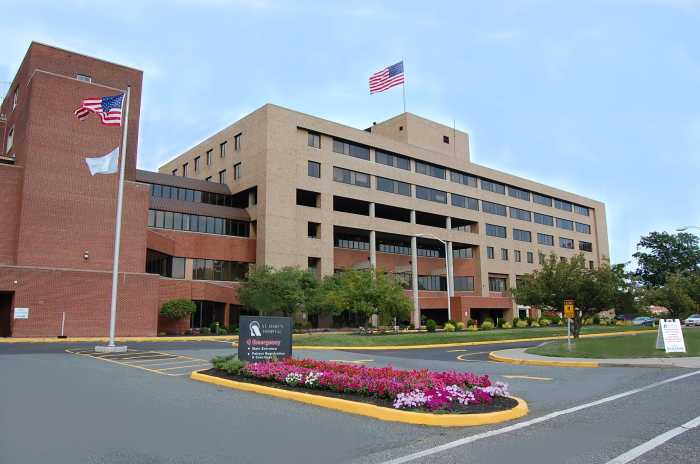In 1955, Robert Levine stepped off the Fire Island Ferry and was greeted with a banner reading, “Welcome, Rose Levine.” Seventy years later, he hasn’t left—and Rose is renowned throughout Cherry Grove and the Pines for her elegant performances, typically clad in a sophisticated black dress, three-inch heels, and refined jewelry.
The Guinness Book of Records has named Bob the oldest living drag queen (although he prefers the term “drag performer.”) He is a prominent figure in the community both on and off the stage.
Bob has been writing for the Fire Island News since 1973. In 1976, he was part of the “Invasion of the Pines,” a term which he coined in his column the following week. In response to a drag queen named Terry Warren being denied service at a bar in the Pines, 15 people, including Rose, boarded a boat and entered the same establishment. The Invasion remains a beloved annual celebration to this day.
Bob and his partner, artist Michael Fitzgerald, have been together for 32 years. The two are well-known and loved throughout Cherry Grove and the Pines.
Fire Island News (FIN): You said in an interview with the Fire Island News that you first came to Fire Island on July 10, 1955, when a friend invited you to stay with them, and you never left. What were you expecting when you came to Fire Island, and what was that first experience like?
Robert Levine (RL): I was expecting a lovely weekend away from the world because there was no electricity (although the theater and the grocery store had generators), and there was no running water. At that time, there were approximately 100 people, all of whom were very friendly. There were cocktail parties, there was a show, and we made our good times.
FIN: You were also one of the original “Invaders,” a term I believe you coined.
RL: Yes, I coined that expression, “the Invasion.” And I was on the original boat. I have the original column that I wrote for the July 17, 1976 issue of the paper. The Invasion was the week before.
FIN: That day beautifully speaks to the collective power of the gay community. Did you know at that time the significance of what you were part of?
RL: No, but in my column, this is what I wrote:
“Cherry Grove invades the Pines Tea Dance Saturday, 6:30 p.m. with a drag-in… Fifteen some very odd of us from the Grove, all dressed in the early Grove style”—which meant kind of funny drag—“took the water taxi and arrived at the height of the Tea Dance, circling the Pines Harbor and causing pandemonium among all there at the Boatel and the tall yachts (some short). It was done as a lark. One more memorable, fun project that will undoubtedly be talked about in years to come.”
That’s what I said 50 years ago.
It was just something we did to protest against the way they treated someone we loved who was denied entry.
FIN: How did Rose come to be?
RL: Well, I was [already] Rose when I arrived here. The person who invited me here was a classmate of mine at an art school, and he was there when another classmate wrote “Rose Levine” on a dusty window. So, I’ve been Rose Levine since I arrived here, although I didn’t perform at that time.
FIN: Who were you performing for in those days?
RL: The audience originally started as homeowners and guests in Cherry Grove – in the ‘40s and ‘50s – before I got here. The original shows on Saturday nights in the Grove were the only source of entertainment at that time. Cherry Grove was originally a fishing village. When I arrived here, it was primarily gay men and gay women renting from the families who lived on the mainland, before gay people owned their own houses. We had parties every weekend. Each week was another theme—a hat party, a high heel party, a Western party, a scarf party. Then it developed into dinner parties. When the Pines developed, John White started the Tea Dance in the Pines.
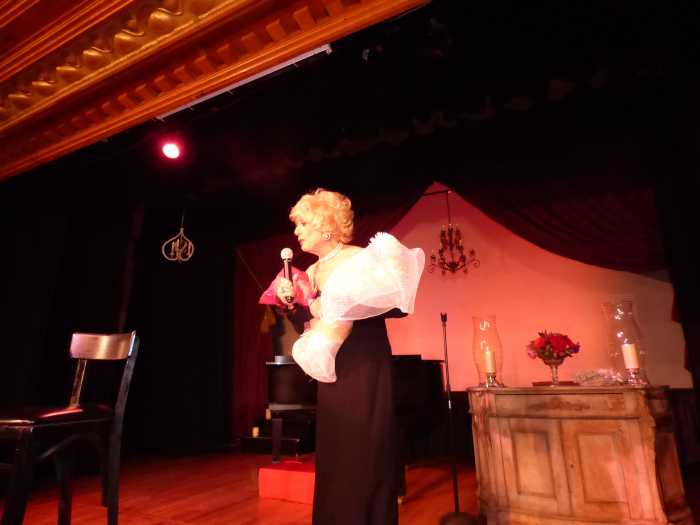
FIN: You said in a previous interview that you started the trend of borrowing a dress for a show.
RL: Yes, I was a buyer on Seventh Avenue. I represented over 100 stores, and most of the designers knew me. I bought designer price point merchandise. In the ‘60s, the up-and-coming designers—Calvin Klein, Donna Karan, Liz Claiborne, Perry Ellis, Geoffrey Beene, Leo Narducci, Tracy Mills, Cathy Hardwick, and Michaele Vollbracht—were starting to get recognition. As business associates, they visited me on Fire Island… At work, they would quietly say to me, “Do you need a dress for your next show?” I’d come up to the showroom, and try on a few dresses in the sample room—I fit into the sample sizes. For every show, I would have a new dress, and then I’d return it on Monday morning. (I gave Nancy Reagan the idea.)
FIN: But in the early days, before designers started loaning you dresses, you made your clothing.
RL: The first year when I started, I didn’t have any women’s clothes. I didn’t even know I was going to be in drag. I got a part in a show as a chorus girl, and I needed something to wear. I lived at home with my mother and father in Westchester. There were things in the back of the garage that my mother would set aside to get rid of. So, I found an old drapery. I had a bathing suit, and I went to Woolworths, and bought a skein of yarn, and I made a wig out of it. That was my first wig. And I borrowed a pair of heels, and somebody made me up. And then the next show—Martin Kraft was the director—he asked me if I could sing. The next show, he gave me a solo, Rose of Cherry Grove Fame, which has become my signature song, and I’ve been singing solos ever since.
FIN: Was the fashion industry generally accepting of Rose at the time?
RL: I had an important job on Seventh Avenue. People who knew me knew I had a house on Fire Island, and that I did shows. It was always in a whisper. I loved having a house on Fire Island, but in those days, if you asked gay people, “Where are you going for the weekend?” most of them would say, “I’m going to the Hamptons” (you’d see them on Fire Island).
FIN: Cherry Grove and the Pines are now considered a gay haven, but have never really been out of reach of politics, of course. You’ve been a prominent part of the Fire Island community through the police raids of the ‘60s, the AIDS epidemic—and now, when queer and particularly trans people are once again under attack. What were those times of crisis like for you?
RL: For me, my life never changed. I’ve always been who I am. We’ve had many political figureheads come to the Pines through the years for fundraisers – Kirsten Gillibrand, Chuck Schumer, Douglas Emhoff, Howard Dean, Pete and Chasten Buttigieg, among others. We don’t have protests or rallies here. But we have fundraisers—that’s our fun, and our way of supporting the LGBTQ+ community.
In the ‘60s, we had raids. Nobody was ever hurt, but they would arrest people. They were young, good-looking shills cruising the gay men. If you touched them, you’d be arrested and taken off the island, and put in jail for the night. It was terrible in the ‘60s— ‘62, ‘63, ‘64. Many of our friends went missing overnight.
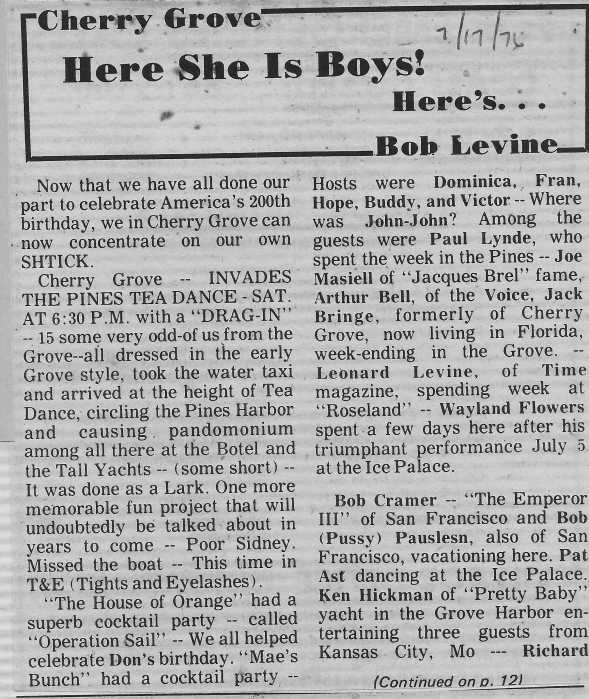
I got a call one morning from a friend in jail. In those days, we didn’t have telephones or cell phones. There was a phone booth in town. The person in jail would call the phone booth. Then [whoever picked up the phone] ran to my house to get me. I picked up the phone and said, “Where are you?” He said, “I was in jail overnight.” He needed $1000 to bail him out, and I sent it over immediately. He was back in the Grove by 9 p.m. However, the court case lasted for three or four years. It was just a terrible experience. My friend wasn’t the only one, of course. They would arrest executives and print their names in the New York papers. Some of them were fired.
FIN: During the AIDS epidemic, did the performances and parties you describe continue?
RL: We continued the shows in the Grove with a smaller cast. Then, in 1981, I was the first to perform a show at the old Pines Community Center for FIPAP (Fire Island Pines Arts Project), titled Rose in the Pines. In 1986, John White asked me to do the first GMHC (Gay Men’s Health Crisis) fundraiser in the Pines, called Rose’s Turn, at midnight. We raised $3000, which was unheard of in those days, and they were thrilled to receive that check. The following year, we did God’s Love We Deliver. I also attended the first Lambda and SAGE fundraisers, as well as the recent Callen-Lorde event. The fundraisers have never stopped.
FIN: Drag culture has shifted significantly since you first started performing as Rose.
RL: When I started, drag was funny. People dressed as characters—housewives, grandmothers. It was frumpy. I never dressed that way. I always dressed in authentic, elegant clothing, not costumes. Many younger people today who are entering the drag scene don’t sing live; they lip-sync. They’re all very highly dressed with big wigs, lots of makeup, tall shoes, elaborate glitter, and costumes. That’s what many people know as drag today.
FIN: What do you think about the mainstreaming and commercialization of drag?
RL: Drag shows and Sunday brunches have become big money-makers in many cities around the country and on Fire Island. The straight people love it. Groups of young straight girls will go to drag shows for a pre-marriage party, bridal party [bachelorette party]. Love it!
FIN: In an interview from a few years back with Tom Dash for StoryCorps, you described your age as “ageless.” Is that still true?
RL: Still true. I don’t go by age because it’s only a number, and I don’t believe my age.
Rose Levine will be performing live at the Cherry Grove Community House Theater on Saturday, July 19, beginning at 8:30 p.m. For ticket information, visit artsprojectcg.org.
